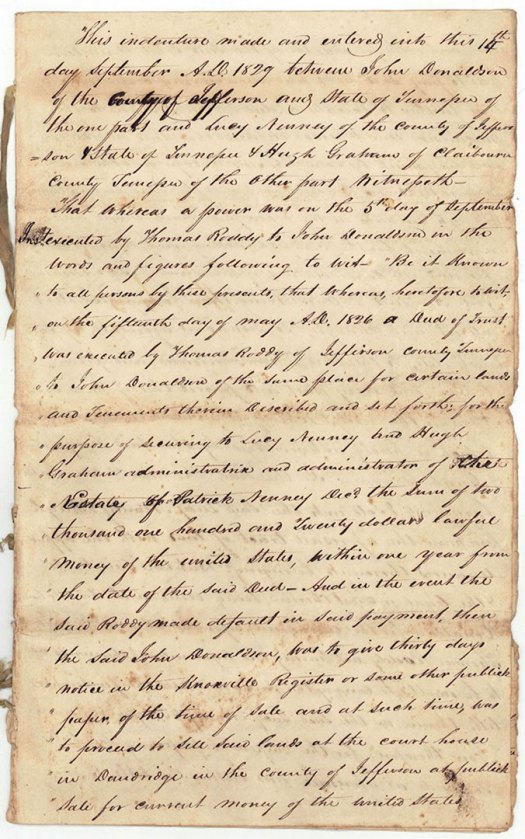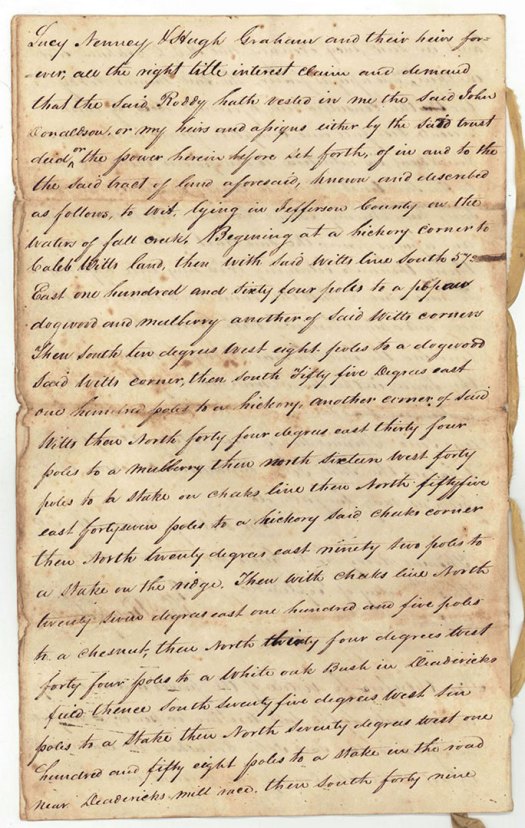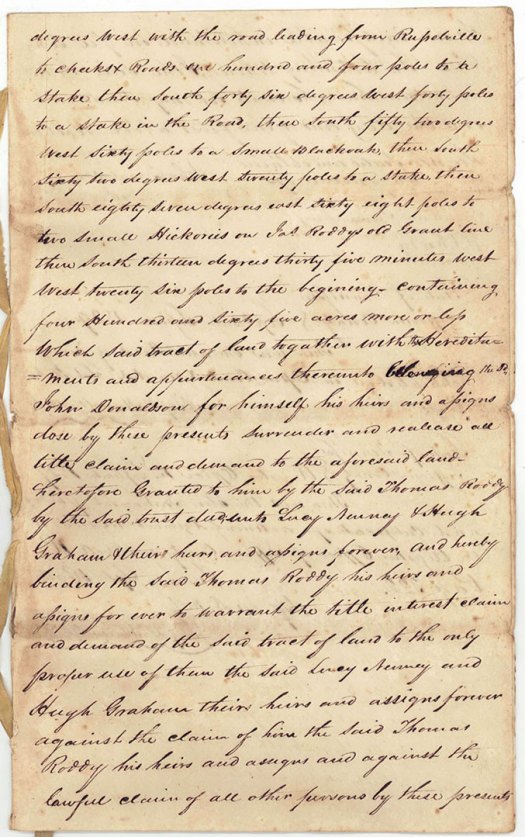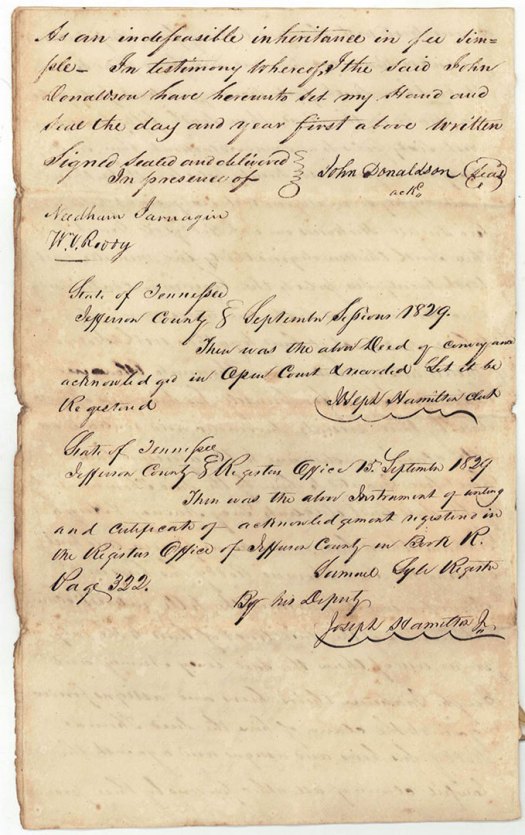I tell people I’ve wanted to restore Hayslope for a really really long time, and it’s true. I don’t remember ever not being fascinated by the house and its history, and I would tell whoever would listen that I wanted it to take its rightful place in Russellville’s story, beyond a Tennessee Historical Commission sign on the highway that pointed in the wrong direction.
I can’t say how many people really listened as I’d tell the story. My parents didn’t have much choice, so they got an earful. I think they pretty much just humored me when I was a wee tyke, but they did make sure that in between tenants, I got to go over and go inside. That’s how I knew about Uncle Escoe’s cedar room and that one closet in the front where I could see James Roddye’s logs – pristine, like they’d never been touched by rain or snow.
They probably didn’t, come to think of it. Those logs are high up on the front side of the house, just under Roddye’s original roof line and just above the front porch. They were well protected, and fairly quickly covered over when the roofline changed to include the porch.
That was the only place to see the logs. The house had long been sided, with a variety of sidings over the years. Walnut, cedar shakes, and plain old whiteboard on the outside, and chestnut and wallpaper on the inside.
Heck, we didn’t even know the north side, what we call the annex, wasn’t log until we started taking all that siding and wall cover off. Surprise! Stick frame! Hand sawed stick frame.
We believe the colonel built the annex right around 1800 – that’s the date on the brick we found under the stairs. The stairs didn’t come right away, though. The original cabin, one room with a loft and a ladder to reach it, became two rooms with a loft and ladder. A door was cut dead center on the north wall to access the new room.

Later – and we don’t know when just yet – the stairs were put in and that door was covered over. A new door was cut back on the northwest corner, the roof was raised, and the upstairs loft became two full rooms.
That’s the house we know today, except for Uncle Escoe’s addition of a kitchen and bathoom (and cedar room) on the back, which took over where the old two-story back porch stood.
In between was the Rogans’ dining room – a large room off the northwest side of the annex. We have one for sure picture of the outside. Uncle Escoe, we believe, cut that room off and made part of it into his addition.
Anyway, I talked a lot about the house when I was growing up. And after I grew up and would come back to visit. The house needed to be restored, I pleaded. Dad wouldn’t budge though. Mom started telling me the logs weren’t even there anymore, that they’d all been eaten by termites.
“You can’t know that,” I’d tell her. And hoped it wasn’t true, becasue to be honest, I couldn’t know either.
And finally, Hayslope is mine. I wasn’t sure for a while that I’d ever even start on this project, because I’d gotten kinda old over the years myself. I did though. And when we took those chestnuts off the inside walls, we found that Roddye’s logs weren’t eaten up by termites after all. There’s some damage, mostly water damage, on the logs, and a bit of termite damage, most of it in the cellar.
But the colonel’s logs are right there, thick and darkened with age.

The Roddyes were gone from the old house by 1830. They went to Rhea County, to Mississippi, Louisiana, Texas, Georgia, and other places – including Whitesburg, just down the road here in East Tennessee, and where James Roddye’s original lands were, along Bent Creek. Whitesburg is where the children of James’s son Thomas lived, where his wife Lydia Nenney Roddye returned after her husband disappeared in Georgia.
And it’s where some of them remained. There are relatives of this line living in Whitesburg still, and then some who headed farther than any Roddye had ever gone, at least since James Roddye’s grandfather came across the Atlantic from Ulster.
Thomas Roddye’s family
Patrick Nenney Roddy was Thomas and Lydia’s oldest son, and the only one born in Tennessee, before the family lost Hayslope and moved to Georgia. He and his brothers and sisters came back up to old Jefferson County with their mother, around about 1837, when Thomas disappeared.
The family lived with the Nenneys for a time – Lydia was the daughter of Patrick Nenney and the sister of Catherine Nenney Graham and Charles P. Nenney. I imagine Patrick, at 11 or 12, might have seen himself as the man of the house in the absence of his father.
I’ve seen mention of an older sister born in Tennessee – the name Maranda has popped up, but she must have died young. A possible younger sister may also have been born before the family headed to Georgia. The name Lydia shows in some records but again, the child appears to have died young. The others – Thomas, Mary, James, and Elizabeth – were all born in Georgia, in the area of Villa Rica and Carrollton.
When the elder Thomas vanished, though, Lydia and her children began the trek back to Jefferson County, after first making a stop in Rhea County, where several of her in-laws lived. She lived with the Nenneys for a time back in Whitesburg but appears to have had her own place for most of the rest of her life, with her school teacher daughter Elizabeth living with her. Not much is known about her life, but a look at the purchases she made at her family’s store gives the impression she may have taken on sewing for an income.
Of her children, only Mary’s family, and some of Patrick’s, remain in the Whitesburg area. Mary married James Day, and she was a bridesmaid at the wedding of Theo Rogan and Louisa Graham in 1853, before they moved to Hayslope in about 1862. Thomas remained in Whitesburg, but his children scattered. James moved away. Elizabeth stayed but never married.
Patrick, or P.N. Roddy as he was often known, became a lawyer, a justice of the peace, and an elected magistrate. He married Mary Ellen Stacks in 1866, and they had three children – Mary Ellen, James Patrick, and George Edward.


Mary Ellen, known as Dovie, married her neighbor, Jacob Haun, and stayed in Whitesburg, Her descendants still live in the area. James Patrick moved to Knoxville, started a bottling company and brought Coca Cola to East Tennessee, and George Edward headed West.
A grocer by trade, he lived in Texas and for years in New Mexico, spending the final years of his life in California. He married Maggie May Reed in Texas, and their son Daniel was born a couple years later in Roswell, New Mexico. George also served as justice of the peace in Albuquerque for several years.

The photos of P.N., Mary Ellen, and George come from George’s granddaughter, who contacted me through this website, totally making my day when she did! She also sent me a photo of George in his later years and another of her father, Daniel, posing by the Hayslope sign on 11E.
Back to the present
If you’ve driven past the house recently, you may have noticed a change – we have a fence and real gates now! The gorgeous split rail fence was built by Brown’s Custom Fencing and Construction in Bulls Gap, and I couldn’t be happier. They even custom-built the wooden gates.
Inside the house, things are moving apace. Thomas is sourcing some logs to replace badly damaged ones – there aren’t too many, but the one there are pose a problem structurally until they’re replaced. Same goes for some floor beams in the cellar. Meanwhile, he’s got it nicely shored up and ready for the new wood to go in.
Most of the addition on the back is gone now, so we’re working on determining how to rebuild the old two story porch while also adding modern bathrooms. The plan so far will keep the plumbing outside both the original cabin and the north annex, just like Uncle Escoe did.

Then there’s the question of the door between the original cabin and the annex – it’s dead center on that wall, hidden behind the stairs until we uncovered it. I really want to use that door between the two downstairs rooms, but when that door was in use, a ladder led upstairs. It was covered when the stairs were built for obvious reasons, and it’s just not clear at this point how we can use the original door and keep the stairs!
So that’s the update for now. I’ll be making a very quick trip up next week to deal with some computer issues.









